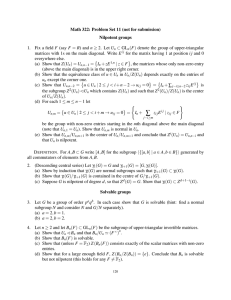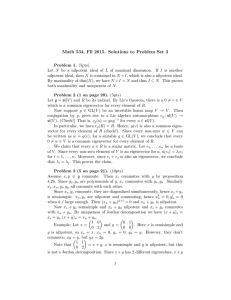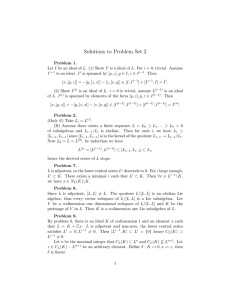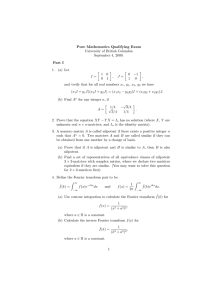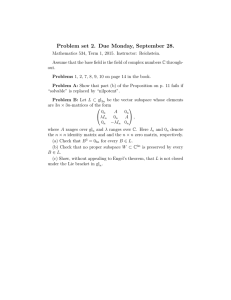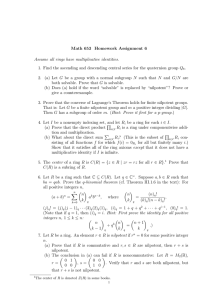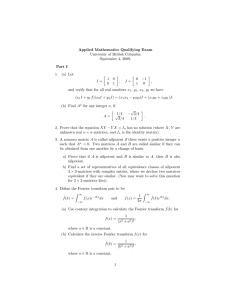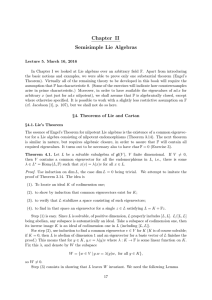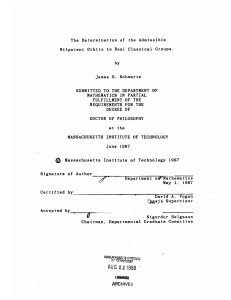Problem set 3. Due Wednesday, October 14.
advertisement
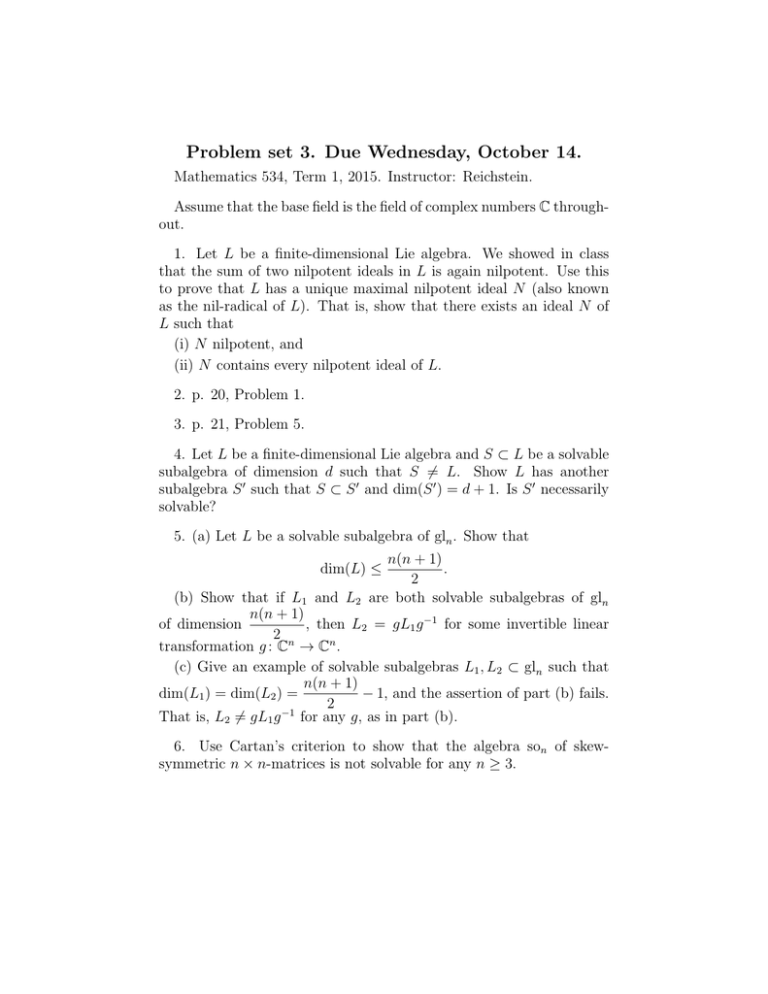
Problem set 3. Due Wednesday, October 14. Mathematics 534, Term 1, 2015. Instructor: Reichstein. Assume that the base field is the field of complex numbers C throughout. 1. Let L be a finite-dimensional Lie algebra. We showed in class that the sum of two nilpotent ideals in L is again nilpotent. Use this to prove that L has a unique maximal nilpotent ideal N (also known as the nil-radical of L). That is, show that there exists an ideal N of L such that (i) N nilpotent, and (ii) N contains every nilpotent ideal of L. 2. p. 20, Problem 1. 3. p. 21, Problem 5. 4. Let L be a finite-dimensional Lie algebra and S ⊂ L be a solvable subalgebra of dimension d such that S 6= L. Show L has another subalgebra S 0 such that S ⊂ S 0 and dim(S 0 ) = d + 1. Is S 0 necessarily solvable? 5. (a) Let L be a solvable subalgebra of gln . Show that n(n + 1) dim(L) ≤ . 2 (b) Show that if L1 and L2 are both solvable subalgebras of gln n(n + 1) of dimension , then L2 = gL1 g −1 for some invertible linear 2 n transformation g : C → Cn . (c) Give an example of solvable subalgebras L1 , L2 ⊂ gln such that n(n + 1) dim(L1 ) = dim(L2 ) = − 1, and the assertion of part (b) fails. 2 −1 That is, L2 6= gL1 g for any g, as in part (b). 6. Use Cartan’s criterion to show that the algebra son of skewsymmetric n × n-matrices is not solvable for any n ≥ 3.

